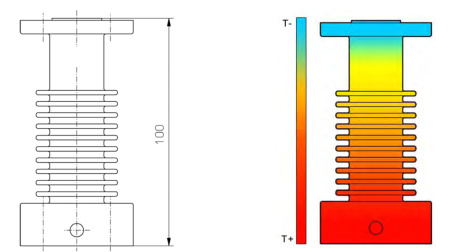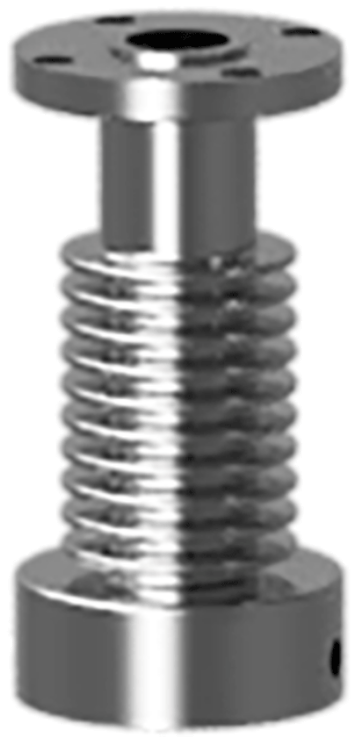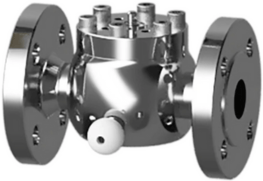How to Actuate Our Sample Valves
Opening and closing our sample valves couldn't be easier. All our sample valves are fitted with our proprietary spring-to-close mechanisms. Our most popular is the "Magic Hand Wheel" but we also offer two other spring-to-close options: a spring-to-close hand lever or pneumatic actuator.
Depending upon your insulation requirements, one or two "cooling fins extensions" can be fitted between the valve body and the actuator.
Spring To Close Hand Lever
The spring to close hand lever actuates the valve with simple efficiency and ensures that the operator can't walk away from an open valve. Another safety feature of this system is that the operator must operate it in two swift motions, pulling the handle out and then down to open the valve and take a sample. This simple design ensures that the valve cannot be opened inadvertently. The hand lever can also be locked by fitting a lock at the base of the handle to prevent unauthorized use.
It also features a stroke limiter on the top of the mechanism so that sample flow through the outlet can be regulated.
Recommended for:
- Highly viscous chemicals
- Low-pressure sampling
- Sampling into a cylinder
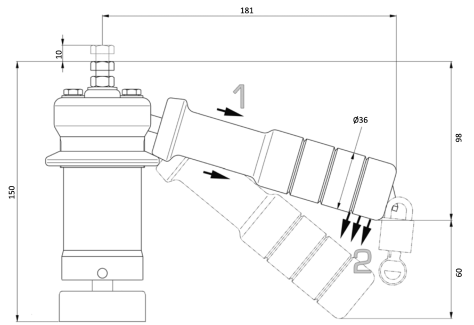
Spring to Close Hand Wheel
The spring to close hand wheel (AKA Magic Handwheel) is a very simple device for opening the valve. When taking a sample, the Operator must hold the hand wheel open to allow product to fill the receptacle. When they let go, the valve automatically shuts itself off, a safety feature that ensures that operators cannot walk away from an open valve.
Recommended for:
- Normal & high-pressure sampling
- Any type of chemical
- Sampling into a bottle
- Sampling into a cylinder
The spring to close hand wheel also comes with other safety options, such as a PFA coating to prevent thermal burns with high temperature processes, optional key lock and a stroke limiter to regulate the flow rate when taking a sample. The Magic Handwheel is a very intuitive and precise drive option that can be used to take even minute sample amounts.
Our actuators can be equipped with a spindle stroke limiter. An optimal setting of this limiter prevents filling the sampling receptacle too quickly.
Turning the adjustment screw clockwise limits the opening stroke of the spindle. If the screw is completely tightened, then the valve cannot open.
To adjust the flow rate of the liquid to be sampled, we recommend to first tighten the adjustment screw completely, then unscrew it a quarter turn. Actuate the valve to test the flow rate. Repeat by increments of a quarter turn every time, until the desired flow rate is reached. Finally, block the adjustment screw using the set screw or the lock nut.
A new adjustment may be necessary in case of change in pressure or viscosity.
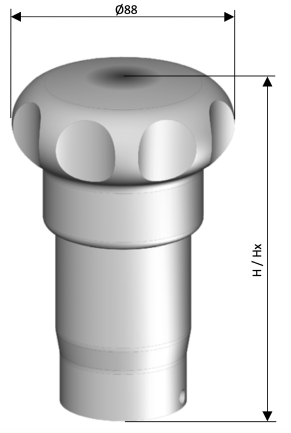
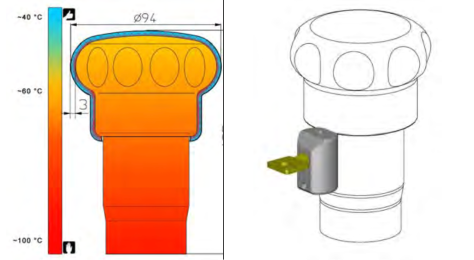
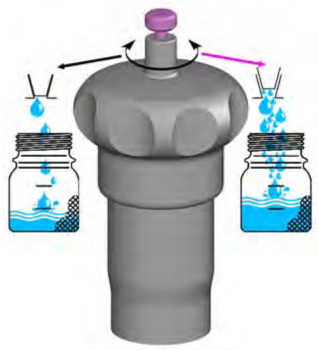
Pneumatic Actuator
The pneumatic actuator can be used for remote and composite sampling when used in conjunction with a time delay unit. It also features a spring to close mechanism.
This actuator works only in a totally open or totally closed position. Therefore, it is important to adjust the spindle stroke limiter correctly before actuating the drive.
The actuating method depends on the configuration implemented by the plant operations staff.
Recommended for:
- Composite sampling
- Hot applications
- Difficult to access locations
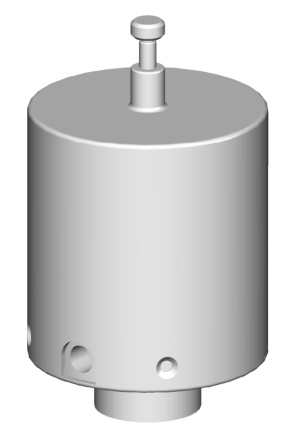
For high temperature processes, we have the added option of a fin extension which serves a dual purpose. While it effectively dissipates the heat before it reaches the handle, it may also be required on piping with thick insulation, allowing operators access to the hand lever, hand wheel or pneumatic actuator.. This is fitted between the valve body and the hand lever and offers another layer of protection from thermal burns. These are rated for temperatures up to 250ºC (482ºF).
